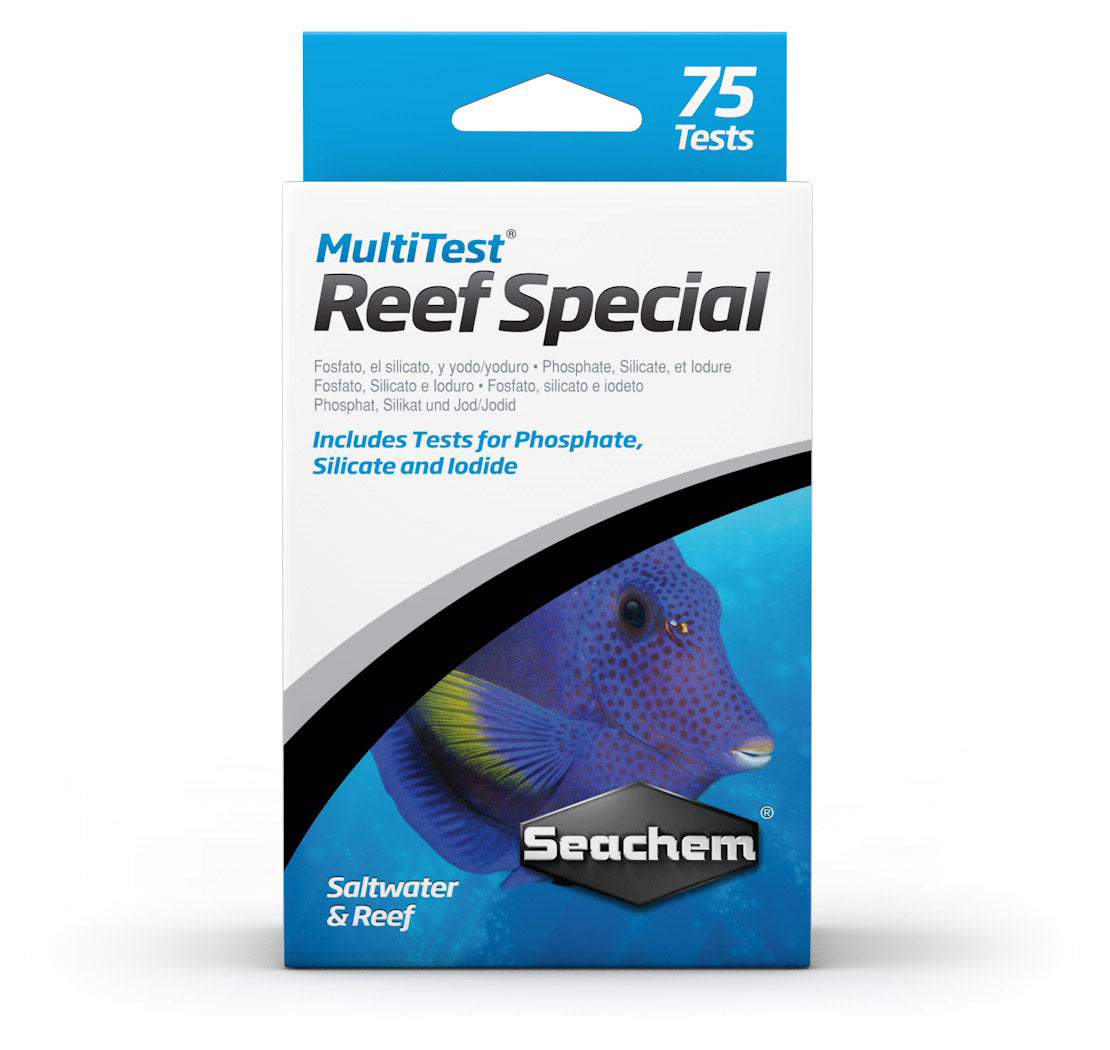Seachem
Seachem MultiTest Reef Special
Seachem MultiTest Reef Special
Couldn't load pickup availability
- Combines the Phosphate, Silicate, and Iodine/Iodide kits
- Multi-cavity plate for simultaneous testing of up to 6 tests at the same time
- Includes reference for test validation
- Saltwater and Reef
This kit combines the Silicate, Phosphate, and Iodine/Iodide kits into one kit. MultiTest Reef Special performs over 75 tests and contains reference samples for validation.
Silicate
The silicate test measures silicates to less than 0.5 mg/L in marine or freshwater. This test measures soluble silicate and reports it as silicate concentration. To convert to silicon, multiply by 0.3.
Phosphate
The phosphate test measures inorganic phosphate to less than 0.05 mg/L, producing a unique easy to read yellow-green-blue color range in marine and freshwater; however, usually, freshwater phosphate concentrations will be beyond the range of this kit, and dilutions of the sample with distilled water will be required.
Iodine/Iodide
The iodine/iodide test offers a quantitative test for this important element of soft and hard coral growth. It measures iodine or iodide to less than 0.005 mg/L. The color scale peaks at 0.10 mg/L.
Features
75 Tests
MultiTest Reef Special performs over 75 tests each of phosphate, silicate, and iodine/iodide
And with the multi-cavity test plate, multiple tests can be run at the same time.
Accuracy
Range
Phosphate:03 mg/L
Silicate:025 mg/L
Iodine/Iodide:00.1 mg/L
Precision
Detectable changes on the color chart in the following increments:
Phosphate:0.0010.1 mg/L
Silicate:0.11 mg/L & 0.010.1 mg/L
Iodine/Iodide:0.00250.005 mg/L
Reference Sample
It isn't necessary to run a reference test to use this kit; however, its proper performance can be validated by running a test in the normal manner except that the reference sample is used in place of aquarium sample. You might choose to run a reference test if you have cause to believe the test is giving incorrect results. If you run a test using the reference sample and obtain the correct result (based on the known reference value provided) then you can safely be sure the test is giving accurate results.
Share


